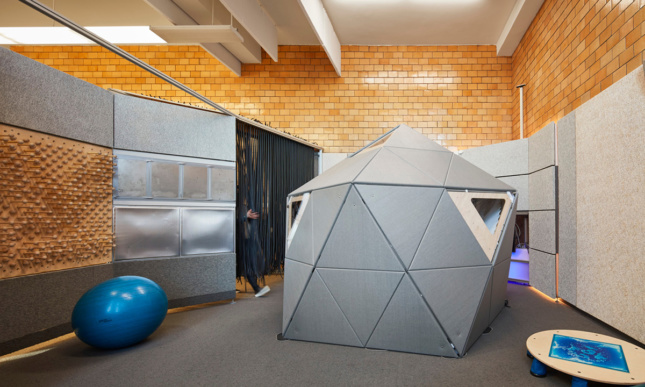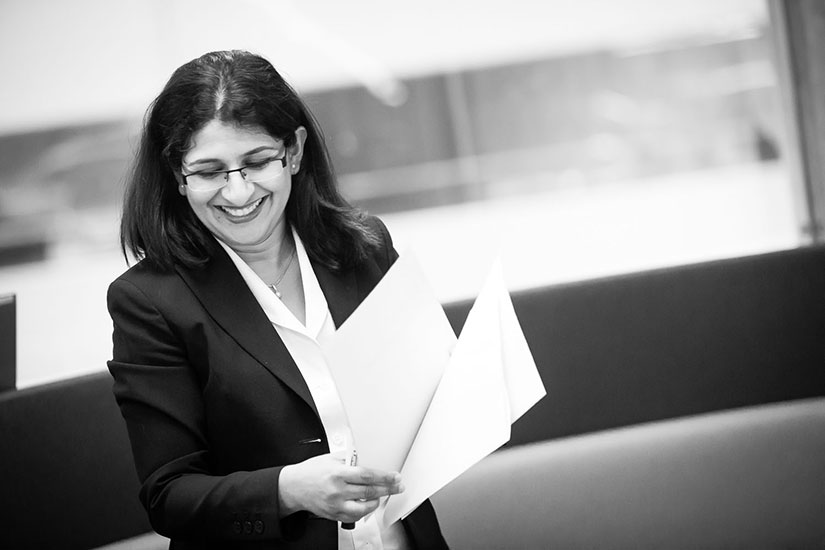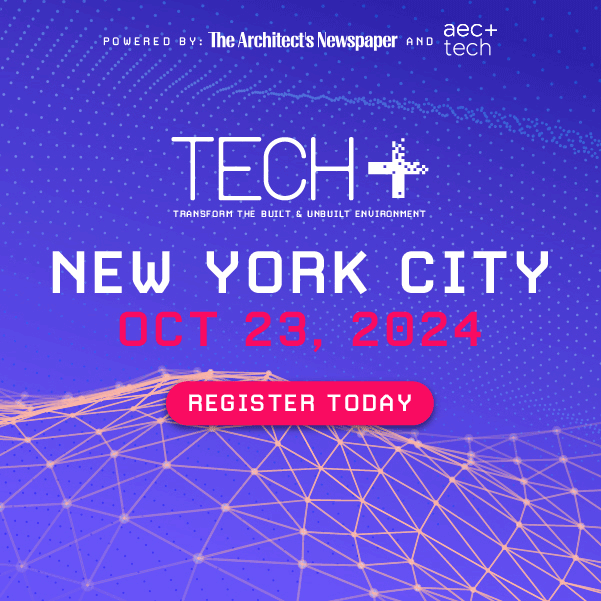Doctor Upali Nanda is reimagining the role of the architect. Where design today is often top-down and architects move on to new projects before doors of the project open, Nanda believes the role of architecture is to create living systems that respond to inhabitants’ changing needs, and architects have to stay involved during occupancy to have true agency.
Nanda heads up cutting-edge projects as principal and director of research at HKS Architects, and also serves as the executive director for the nonprofit Center for Advanced Design Research and Education, and teaches as an associate professor of practice at the Taubman School of Architecture and Urban Planning at University of Michigan. Perhaps most tellingly, she serves on the board of directors of the Academy of Neuroscience for Architecture. Working to create measurable outcomes in buildings that respond adaptably to human cognition and perception, Nanda will be discussing the intersection of data, neuroscience, and IRL space at the upcoming TECH+ conference in Los Angeles.
AN: In many ways, you’re an outlier in architecture as a researcher who really thinks about human perception and cognition. How did you wind up approaching architecture this way?
Nanda: My entire career pathway can be summed up as someone who links design to outcomes, trying to understand the difference we make through design, and how human perception and human cognition play into it. My doctoral work was on how senses interact with each other to craft our perceived experience. By diving deep into neuroscience I stumbled upon insights that could give me agency as an architect. It allowed me to ask how form could impact emotions, or how art could impact health, or how views could impact achievement. It also changed my thinking to architecture not as a building, but an immersive interface between humans and the environment.
We create interfaces, and that perhaps gives us a certain overlap with the tech industry. The difference is that humans are immersed within the interfaces we create. We constantly work at a different scales—from macro to micro and back again. Unfortunately, all too often with these immersive interfaces that we create, we never truly engage with what it means to the people who live in it, because our engagement with the project has ended long before people move in.
How does this impact how you see the lifespan of the design process and the architect’s role in it?
A project doesn’t end when the doors open. That’s when it begins. So a project really starts living when the doors open, when people are in it. Until that point, all of your design is a hypothesis. And until we test that hypothesis, not just in simulations, but in lived reality, we have no proof that it works. What’s fascinating is that we cannot test this performance once and think its enough. We are living organisms. And what we create, once occupied, is a living organism too. Architects evolve, the building evolves, and occupants evolve. Not seeing architecture as an evolving, living organism has always been problematic.

How has that shifted with the increase in sensing technology and the ability to build measurement in?
We live in times where there is so much nuanced data available that we never had access to before. We can now measure environmental quality, energy performance, and space utilization on one end, and human physiology, and brain behavior on the other. Our understanding of the human brain, the human body, and the building have all become more sophisticated.
We can now think of the brain and the building in new ways. The human brain responds to the building for sure, but also there is now brain in the building itself that can respond back to human needs. In an era of sensing systems and digital twins the building has a brain of its own. It is well on its way to becoming an intelligent organism that is climate responsive, but can also be community responsive.
We are at this inflection point where the human brain and the building brain can be in conversation with each other. They can talk to each other. They can respond to each other. That’s an entire paradigm shift because that changes how we look at architecture and makes us stop looking at architecture as a static object or as an object at all, but rather a living breathing organism that interacts actively with the people that it’s for. And this means investing in people science as rigorously as we invest in building science.
So what does that mean for someone like you? What does that mean for how architects can begin to think about approaching what it means to do architecture in this way?
For someone like me, and researchers in practice all over, this means finding ways of linking design to outcomes—during occupancy. One of my colleagues says it best when he says “there is nothing post about occupancy.” That is when our work is tested and really comes to life. Occupancy is what marks the transition of a building from being giant sculpture to architecture. Our work should always be judged not pre-, or post-, but during occupancy. The changes I see in our profession are making us focus on occupancy, be accountable to occupancy outcomes, and be able to link the performance of the building, to the performance of the people within that building, within the context of the climate and community that we serve.
When we link design to outcomes, we link prediction to proof. We’ve done prediction—not enough, and not always well, but we are getting there. A lot of the modeling we do, a lot of the software we talk about, they’re all about prediction. Unfortunately we’ve reached a point as a society where we keep predicting what is going to happen. But at some point, we’re going to have to stop and ask ourselves, “where’s the proof?” We have to be honest when things didn’t really happen the way we thought they would. If design is about predictions, then we have to have some accountability to the proof.

What’s an example of how you’ve put this way of thinking to work?
As someone who bridges practice and academia, I believe we have to practice what we preach. Or die trying. Students at the university now are coming out with not just an incredible skillset, but also a level of citizenship we have not seen before, and so the courses I teach are set up to link students to professional mentors and professionals to state of the art academic thinking
At our firm, one thing is we set up our own offices as living labs. We had discoveries in-house where we said, “Why don’t we just test on ourselves before we do any renovation?”
So we did. We were about to refresh a few offices so we set them up as living labs, which meant before we did anything, we did a lot of design diagnostics. We measured the energy use, environmental quality, and spatial quality, as well as the experience of our employees. We used old-school methods of interviews, and surveys as well as digital tools using sensors and spatial analytics. We had data on where everybody sits, how they move, what activities they do at certain points in time, and their personality types. Because these were our own offices, we had access to all of this data not just from before and after they moved into this space, but also every morning and evening for a period of time. That was important for us because we acknowledged that human experience is not defined in a single point in time.
Our findings from the Chicago living lab showed an improvement in sleep quality and focus. We saw an improvement in overall reports of well-being. We also saw an improvement in air quality and some of the environmental measures. We were able to say that when the environment becomes better, the human response to the environment also becomes better.
One of the things that’s been a challenge for us in our profession is that we have been many, many levels removed from final occupancy. We need to blur those boundaries. We need to be able to speak directly to the occupant. We need to understand that we work for them, that whatever we do is in service of that eventual stakeholder.
Investment in research is investment in a “think, make, test” philosophy: getting to a point where every time we want to try a new design strategy, we test it. We have to understand that we are not only doing studies that are pre- or post-occupancy, but setting the stage for a living, breathing, learning ecosystem. We learn from the mistakes because we are living with them. And as we evolve, the system evolves with us.
For more on the latest in AEC technology and for information about the upcoming TECH+ conference, visit https://techplusexpo.com/events/la/



